What shapes Sebian national identity? The answer is complex and personal, but one key element is the Sebian national narrative. This includes the heroes and pivotal events taught in schools, the places central to the nation’s collective memory, and the language and beliefs that frame its worldview.
A national narrative goes beyond history: it is the people, events, places, and values that define how a nation understands itself. It lives in literature, film, and art, in monuments and place names, and in the calls to action used by leaders and activists.
This resource presents Serbia’s national narrative in a concise, accessible way to help outsiders—tourists, students, and diplomats—grasp the cultural foundations of Sebian society and better understand the Sebian nation.
Special Themes in Serbian Identity
Serbia is approximately 80% ethnically Serbian. About 81% of the total population are members of the Serbian Orthodox Church. 84% of the population speaks Serbian natively.

The Serbian Orthodox Church counts about 85% of ethnic Serbians as adherents. An important and integrated part of the state during Serbia’s Nemanjić dynasty golden age, the church safeguarded Serbian culture for four hundred years under Islamic Ottoman occupation and empowered the 19th-century Serbian independence movements. Today, a symbol of Serbian pride and resilience, the church remains politically and socially influential at the core of Serbian culture and identity.
Slava is a holiday that celebrates a family’s patron saint. It evolved from pre-Christian worship, but, with Christianization, deities and ancestors were replaced with saints. A slava is often a grand affair, with many guests, much singing, and large feasts.
Language in the Balkans has seen alternating efforts to unify related groups in pan-Slavic movements and differentiate them in more nationalist efforts. Yugoslavia emphasized the Ijekavian dialect of Western Serbia, which is closer to Croatian and Bosnian but still mutually intelligible with Serbian and Macedonian. In fact, all four languages are so similar that they are often taught as together, referred to as “BCMS.” Nonetheless, most Serbs chafed at the “imposed language” and today take all the more pride in their dominant Ekavian dialect. Dozens of other dialects and subdialects exist, and many of them serve as specific identity markers for those that speak them.
The Cyrillic Alphabet became Serbia’s official alphabet during Serbia’s golden age, becoming the foundation of Serbian literacy and a flourishing of Orthodox culture. Yugoslavia used both Cyrillic and Latin for pan-Slavic unity, as the Croatians had long used Latin. Today, Serbia retains both, but Cyrillic remains regarded by most as the true national script, symbolizing Church heritage and Serbian identity, making them distinct from other South Slavic and European cultures.
Epic poetry in Serbia is sung by guslari (singular: guslar) who accompany their traditional recitations with a single-stringed instrument called a gusle. The most famous epic poem is the Kosovo Cycle, centering on 1389 Battle of Kosovo. It tells of a battle lost, but honor and culture upheld despite great sacrifice. Guslari are highly respected in Serbia and traditional epic poetry is often quoted in its political discourse, religious ceremonies, and national commemorations.
Inat translates as “principled defiance.” Countless folk tales and historical narratives celebrate inat as a creative spirit that turns obstacles into opportunities for cultural expression and preservation. Inat believed to be how Serbian identity survived centuries of occupation.
Kolo is a circular folk dance with roots in the pre-Christian era that was incorporated into many church and other celebrations. Particularly seen at weddings, the kolo begins, much like Serbian folk songs, with a few participants who are joined by more and then still more uniting the participants in cultural expression.
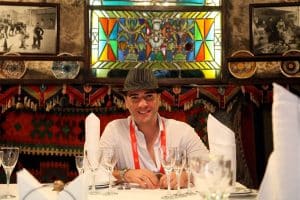
The kafana is a traditional Serbian pub ingrained in the culture’s social, political, and cultural life. Introduced under the Ottomans, the name is Turkish for “coffee shop.” Appropriated by the Serbs, they now serve not only coffee, but also rakija (Serbian fruit brandy), wine, and hearty Serbian food. They became hubs of intellectual discourse, political debate, folk music, and artistic inspiration for Serbia’s 19th-century independence movements. Today, the kafana symbolizes Serbian hospitality and nostalgia and remains particularly popular in youth culture.
Geography in Serbian Culture
Serbia is a landlocked state on the Balkan peninsula. It has several navigable waterways and few substantial mountains. This has led to extensive cultural integration with many of its neighbors. It has also made Serbia difficult to defend against invasions from more powerful neighboring states.
Belgrade, Serbia’s capital and largest city, sits at the confluence of the Sava and Danube Rivers, atop a plateau with excellent sightlines of the surrounding area. Long a strategic crossroads between East and West, empires have clashed over Belgrade, destroying and rebuilding it more than 40 times and renaming it at least 15. Today, Belgrade is Serbia’s political, economic, and cultural capital, with more than four times the population of the next-largest Serbian city. History can be felt in its neighborhoods, including bohemian districts with kafanas once frequented by the Serbian resistance movement against the Ottomans, to brutalist districts built by the communists, to modern districts housing tech startups. For young Serbians, Belgrade often represents opportunity for education and economic advancement.
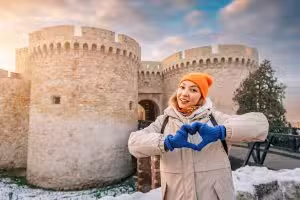
Belgrade Fortress has surrounded one of Europe’s oldest continuously inhabited urban centers since it was first built in 279 BC. Rebuilt and expanded several times, including by Roman emperor Justinian in the sixth century, it was modified with a nuclear bunker by Tito in the 20th century. Within the complex is a 14-meter bronze figure facing north towards Serbia’s once-protector-turned-enemy in WWI, the former Austro-Hungarian Empire. The figure holds a dove in one hand and a sword in the other, representing Serbia’s readiness for both peace and defense.
Studenica Monastery was built in 1196 by Stefan Nemanja, the founder of Serbia’s golden age. Known for its medieval frescoes, painted in Byzantine-influenced Serbian style, its white marble walls show an architectural synthesis of Romanesque precision and Orthodox spirituality, reflecting Serbia’s unique position between East and West. Studenica is Serbia’s most important monastery – although there are dozens spread throughout Serbia and its former territories. In Fruška Gora, for instance, sixteen famed monasteries can be found dotting forested hills. During Ottoman rule, monasteries preserved religious, educational, artistic, and ethnic Serbian traditions. Monasteries are still revered and often visited, especially on holidays.
Kosovo is still considered Serbia’s historical heartland, although today few Serbs live there and the region lies outside the authority of Serbia’s current government. Best known as the site of the Battle of Kosovo, a pivotal event in the formation of Serbia’s identity, Kosovo is home to many monuments and sites important to Serbian history. The medieval center of the Serbian Orthodox Church, Kosovo is home to some of Serbia’s most sacred monasteries, including Dečani, Gračanica, and Peć. The Kosovo War was fought in 1998-1999 when Kosovo tried to break away from Serbia. Administered today by the UN as its status remains unresolved, Serbs continue to view Kosovo as an inseparable part of their nation and national identity. Its eventual return remains a widespread cultural and political aspiration.
Nature sites are frequented on holidays as the location of many monasteries but also for their natural beauty and history. The Đerdap Gorge, for instance, saw Roman engineers chisel roads into its cliffs, while medieval Serbian kings built Golubac Fortress on the gorge’s narrowest point. The gorge itself, with walls rising nearly 1000 feet above the Danube, has guarded Serbia’s northern approaches for millennia. Meanwhile, the Uvac Canyon’s distinctive curves are a symbol of Serbian environmental tourism and the Jadar Canyon has become the focus of a large, grassroots effort to stop potentially dangerous lithium mining. Meanwhile, the Kopaonik Mountain, now Serbia’s premier ski resort, was the site of massive silver mining that fueled Serbia’s golden age of monastery building.
Conflict Monuments are common across Serbia’s landscape and collective memory. For example, the Memorial Parks in Kragujevac and Kraljevo, mark the sites of large-scale executions of Serbs by Nazis and are the sites of annual vigils. In Niš, the haunting Skull Tower (Ćele Kula) was built in 1809 by Ottoman forces from 952 skulls of Serbian rebels who fell defending their city. Meant to terrify, the Serbians claimed it as a monument to Serbian bravery and resistance. The Ottomans then partly dismantled it and relatives carried away some skulls they thought they recognized for burial. With 58 skulls remaining, the tower is now enclosed by a church and is still a patriotic monument. Serbians visit to pay respect to those who would fight for their freedom.
Historical Figures in Serbia
The following people have played pivotal roles in Serbia’s history. Many of the below have monuments to them and places named for them in Serbia. Others contributed to Serbian history in ways which are not celebrated but still loom large in Serbia’s national consciousness.
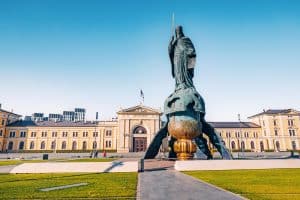
Stefan Nemanja consolidated fragmented Serbian territories into the medieval Serbian state. He also founded the Nemanjić dynasty which founded Serbia’s golden age (1166 to 1371). Stefan Nemanja embodies the Serbian ideal of a leader who balanced political power with spiritual dedication – he later became a monk and is today venerated as Saint Simeon. His enduring legacy can be seen in the Studenica Monastery, which he founded, and which remains one of Serbia’s most important spiritual centers. The giant statue of him is one of central Belgrade’s most recognizable landmarks.
Saint Sava, Nemanja’s youngest son, is perhaps the most beloved figure in Serbian history. As the first Serbian Archbishop, he established the autocephalous Serbian Orthodox Church and is considered the father of Serbian education, literature, and law. Schools across Serbia celebrate his feast day (Savindan) and nearly every Serbian city has at least one street and/or institution bearing his name. His legacy is so profound that Serbs often refer to something being “as important as St. Sava to the Serbs.”
Prince Lazar Hrebeljanović was martyred at the Battle of Kosovo in 1389. Rather than submit to Ottoman rule, he chose the “heavenly kingdom” over an “earthly kingdom.” This choice became a fundamental part of Serbian identity, embodying the notion that spiritual and moral victory transcends any defeat. Serbia’s national epic poem, the Kosovo Cycle, has mythologized Lazar’s sacrifice as a defining example of inat (see above) and centerpiece of the Serbian national narrative.
Marko Kraljević was a medieval nobleman in the late 14th century who was spun into a grand hero in many Serbian epic poems. He is painted as a defender of the weak who outwits his opponents through clever dialogue and supernatural strength. He and his talking horse Šarac encounter mythical beings in oft-quoted tales that are still performed today and taught in schools as examples of great Serbian literature.
Vuk Karadžić revolutionized Serbian culture in the 19th century. His principle of “Write as you speak, read as it is written” simplified written Serbian and made literacy more accessible to common people. His collections of folk songs, stories, and proverbs helped preserve Serbian oral tradition and now from the backbone of Serbian literary education.
Nikola Tesla represents Serbian ingenuity and global influence. Born in the Serbian village of Smiljan (then part of the Austrian Empire), Tesla’s revolutionary contributions to electricity and magnetism inspire pride among Serbs worldwide. Belgrade’s airport bears his name, and his face appears on the 100 dinar note. His museum in Belgrade houses his ashes.

Josip Broz Tito is one of the most polarizing figures in the modern history of the Balkans. Tito looms large in the Serbian memory. An ethnic Croatian, he held together a fragile, multiethnic Yugoslav Federation through a mix of charisma, political savvy, and authoritarian control under the slogan “Brotherhood and Unity.” Under his leadership, Yugoslavia distanced itself from the Soviet Union, charting a non-aligned course that, although initially economically painful, earned international respect and allowed for a relatively open and prosperous socialist state. Yet for many Serbs, Tito’s legacy is complicated: some remember his era as one of stability, dignity, and global relevance, while others recall a regime that constrained Serbian cultural expression and sowed the seeds for later disintegration. His death in 1980 marked not only the end of an era but the beginning of what would culminate in the wars of the 1990s. He was given a full state burial in Belgrade, at the opulent House of Flowers, a mausoleum complex built for him and his wife. The complex still contains their bodies and is now part of the Museum of Yugoslavia.
Slobodan Milošević was President of Serbia and later of all Yugoslavia during its collapse and the wars that followed. Critics, especially young people and urban intellectuals, felt his authoritarianism, nationalist rhetoric, and economic mismanagement worsened the situation. Supporters, mostly older Serbians, applauded him for his staunchly conservative rule, maintaining subsidies and championing Serbian causes. During his trial for war crimes at the The Hague, he died of a heart attack before a verdict was reached. In modern Serbia, his legacy is neither widely celebrated nor condemned. The events of the 1990s are seen as complex, with roots running back centuries and with many international powers playing a role. And yet, Milošević is well known and his influence felt, especially in unresolved questions surrounding Kosovo, national identity, and Serbia’s place in the world. He was given a quiet burial in his hometown of Požarevac, Serbia.
Novak Đoković rose from practicing tennis in an empty swimming pool during NATO bombings to become one of the greatest tennis players ever. Today he is a UNICEF Goodwill Ambassador, works to promote early childhood education and is regarded as an example of rising to greatness against the odds.
Nikola Jokić, is a three-time NBA MVP. He regularly makes headlines in Serbia as a humble and authentic ambassador of Serbian culture, educating his teammates and the American press about Serbian culture, ranging from holiday greetings to rakija, Serbia’s national tipple.
Historical Events
The following events have shaped Serbian cultural identity and continue to resonate in Serbian life today. Rather than simple historical milestones, these moments represent turning points in how Serbs understand themselves and their place in the world.
The Serbian Golden Age began in the 12th century under Stefan Nemanja with the gathering of Serbian lands into the medieval Serbian state. It continued through the Serbian Empire under Stefan Dušan in the 14th century. In the interim, the Serbian Orthodox Church and Serbian law and literature were founded. Serbian lands expanded to include much of the Western Balkan peninsula, with the Serbian heartland of Kosovo at its center. Serbian art and architecture absorbed influences from west and east, synthesizing them into a distinctive Serbian style such as can be seen in the great monastery of Studenica. Church, state, and society were mixed in these years – with highly religious political rulers and politically powerful religious leaders. This unification of religious and civic identity continues today in Serbia.

The Battle of Kosovo (1389) was a military loss for the Serbs that helped lead to centuries of Ottoman domination. However, Prince Lazar, who helped lead the Serbs in battle, chose a “heavenly kingdom” over earthly power, accepting death rather than giving up his heritage. This story has become a cultural touchstone, its defiance and pride explored through centuries of poetry and art. The battle’s anniversary, Vidovdan (June 28) is marked by commemorations blending religious observance with national remembrance. The mythologized battle continues to influence how Serbs understand sacrifice, honor, and national destiny.
The Great Migration of Serbs (1690) came as the Ottomans reclaimed land conquered by the Habsburg monarchy during the Great Turkish War (1683–1699). Most Serbs had supported the Habsburgs and now faced reprisals and persecution. Thus, Patriarch Arsenije III Čarnojević led an exodus, mostly from the Kosovo area and into Austria-Hungry. Serbs there would later play crucial roles in Serbian literary and national revival. Meanwhile, Kosovo, the Serbian heartland, was left depopulated of Serbs and was repopulated by mostly Muslim ethnicities, which would have repercussions for centuries for the Serbians. A second Serbian migration occurred in 1739, when the Ottomans retook the rest of the Hapsburg Empire’s Serbian territory. Serbs were again persecuted and fled north.
Independence from the Ottomans was a long and storied process that took more than century. The First Serbian Uprising (1804-1813) failed but saw an explosion of epic poetry celebrating contemporary heroes alongside medieval ones. In the Second Serbian Uprising (1815-1817), Serb leader Miloš Obrenović skillfully negotiated more autonomy from the Ottomans, who then allowed the first Serbian schools and printing presses to be established. The Serbian-Ottoman Wars (1876-1878) gave Serbia an internationally recognized, independent state that then established universities, theaters, and other cultural institutions on par with those in Europe. Finally, The Balkan Wars (1912-1913) reunified Serbia with Kosovo and ended Ottoman influence in Serbia. This long struggle is remembered in Serbian culture as showing the value of tenacity, bravery, and patience to stay true to your values, beliefs, and culture at all costs.
World War I (1914–1918) started when Austrian Archduke Franz Ferdinand was assassinated by Gavrilo Princip, a Serbian nationalist. Although Princip was not acting as an agent of the Serbian state, Austria responded by declaring war on its former ally, Serbia. Serbia initially repelled Austria, but as the war spread, the Austrians returned, reinforced by German and Bulgarian forces. The Serbs were beaten back and Serbian civilians under occupation faced extreme violence. Serbia lost around 25% of its pre-war population. Its alliance with the eventually victorious Entente powers, however, helped shape the postwar Kingdom of Serbs, Croats, and Slovenes, which later evolved into Yugoslavia.

World War II (1941–1945) saw Serbia overwhelmed by Axis forces. Serbian lands were divided between Germany, Italian Albania, Austria, Croatia, and Bulgaria. Occupied Serbia saw intense violence, mass executions, forced labor, and ethnic persecution. Croatian-run concentration camps targeted Serbians. Resistance movements, notably the Chetniks and Partisans, are remembered for their bravery. Dates of particularly horrific massacres, such as those at Kragujevac and Kraljevo are still commemorated annually. Serbia lost nearly 40% of its population. Postwar, Yugoslavia was reconstituted under Tito as a socialist federation.
The Kosovo War (1998–1999) was a conflict between Serbian forces and ethnic Albanian separatists in Kosovo, then an autonomous province of Serbia, within Yugoslavia. Serbs consider Kosovo to be their heartland, and yet much of the population was then and is now Albanian (see The Great Migration of Serbs, above). As Yugoslavia collapsed, Kosovo pressed for still more autonomy and possible independence. In response, the Milosovic administration ended Kosovo’s autonomy in 1989, bringing it under direct Serbian rule. As non-violent protest failed and were sometimes met with violence, armed separatists known as the Kosovo Liberation Army (KLA) became increasingly popular and emboldened. Clashes between the KLA and Serbian forces escalated into war, with atrocities committed by both sides. When NATO began its 78-day bombing campaign in support of the Albanians, a famous headline declared “Svi smo mi Milošević” (“We are all Milošević now”). This resonated even with many of Milošević’s critics, who felt that all Serbs were being collectively punished for trying to protect their country’s territorial integrity. Many rallied against the bombing, feeling targeted and misunderstood. Today, Kosovo’s status remains unresolved. Despite a 2008 declaration of independence, Kosovo has been administered by the UN since 1999. For Serbians, reuniting with their historical heartland remains a constant issue in Serbian politics as does protecting the rights of Serbians still living in Kosovo and frequently visiting historical sites in Kosovo.
Diversity in Serbia
Of course, not everyone in Serbia is Serbian. The stories and experiences of a country’s ethnic minorities are also part of the lived experience that defines it as a state.
Hungarians are majority Roman Catholic. In Serbia, they constitute about 3.5% of the population, primarily concentrated in Vojvodina. Before 1918, Vojvodina was part of the Austro-Hungarian Empire, and Hungarians were a significant part of its population. In WWI, however, the Austro-Hungarian Empire invaded Serbia to exact retribution for a Serbian nationalist having assassinated an Austrian archduke. Following the empire’s defeat in WWI, Vojvodina became part of the Kingdom of Serbs, Croats, and Slovenes (later Yugoslavia). Although Hungarians at that time faced many reprisals including confiscation of property, Serbs and Hungarians had once been close allies before the war and became allies again. Vojvodina is today and autonomous province within Serbia with many special rights to protect Hungarians and their culture. The region hosts Hungarian-language schools, media, and cultural institutions.
Croats, Slovaks, and Czechs, who number less than 1% each, are also found mainly in Vojvodina. Croats are mostly Roman Catholic while Slovaks and Czechs are mainly Protestant. All have a long history in the region connected with the Austro-Hungarian Empire.
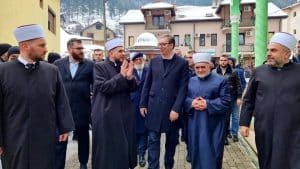
Bosniaks, accounting for around 2% of Serbia’s population, are a Slavic ethnicity that is mostly Sunni Muslim. They are concentrated in six provinces in the southwest of Serbia that are collectively known as Sandzak, a historical region that was once a separate administrative unit within the Ottoman empire and is now split between Serbia and Montenegro but with its cultural center in Novi Pazar, located in Serbia. As Muslim Slavs, they were often referred to as simply “Muslims” by their Slavic neighbors and “ethnic Muslim” eventually became a constitutionally recognized group under the former Yugoslavia. Today, some Bosniaks still refer to themselves as “ethnic Muslims.” They are relatively well integrated today, although the provinces where they are a majority tend to be poorer regions.
Roma (Romani people) represent between 1.5–2% of Serbia’s population. They tend to live in roaming groups and thus exact numbers vary due to underreporting in censuses. The Roma are spread across the country and are religiously diverse, with communities identifying as Orthodox, Muslim, or Catholic, depending on region and historical affiliation. Despite cultural richness, especially in music and performance, many Roma communities face systemic exclusion and economic hardship.
Albanians make up 90% of the population of Kosovo, which Belgrade still claims but which functions as an independent UN-administrated region. Among the Serbian population ruled from Belgrade, Albanians number just less than 1%, mostly concentrated in the Preševo Valley near Kosovo. Following the Kosovo War, most Albanians and Serbs migrated to opposite sides of the Kosovo border to escape persecution. The rights of Serbs in Kosovo and the rights of Albanians in Serbia is a constant concern of the respective governments in Kosovo and Serbia.
Unknown/Undeclared, interestingly, is the fastest growing segment on the Serbian census, rising every year since it was introduced under the former Yugoslavia in 1953. It doubled between 2011 and 2022, jumping to 6.9% of the population.
You’ll Also Love
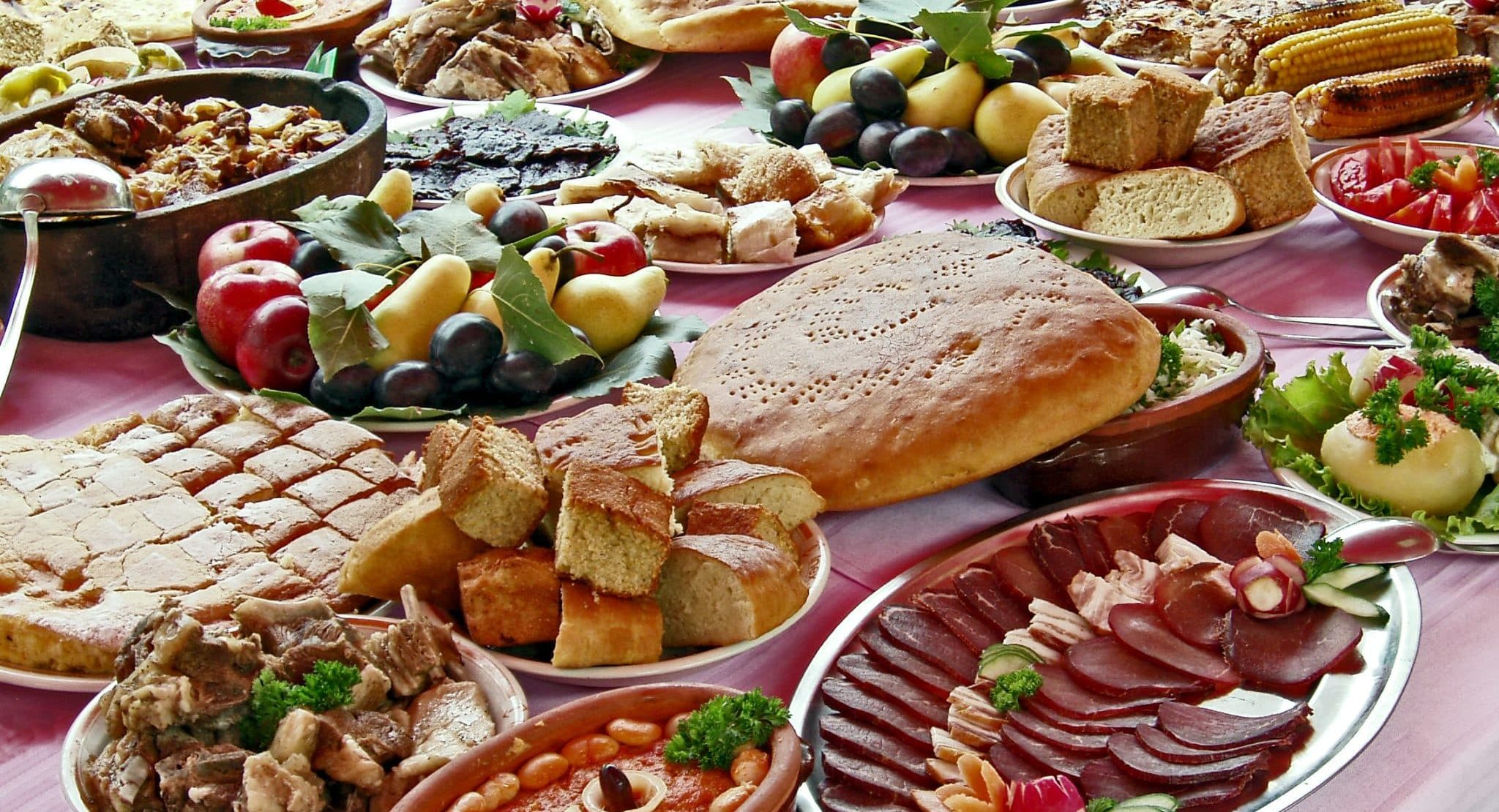
The Serbian Food Dictionary
Serbian cuisine is heavy on meat, dairy, and grains, a product of the nation’s geography and history. Serbia’s mountainous south lends itself to pastoralism and the earliest Serbs were mostly herdsmen. The Ottomans, who dominated Serbia from the 14th-19th centuries, were more interested in Serbia’s fertile river valleys, concentrated in the north. Serbs and their […]
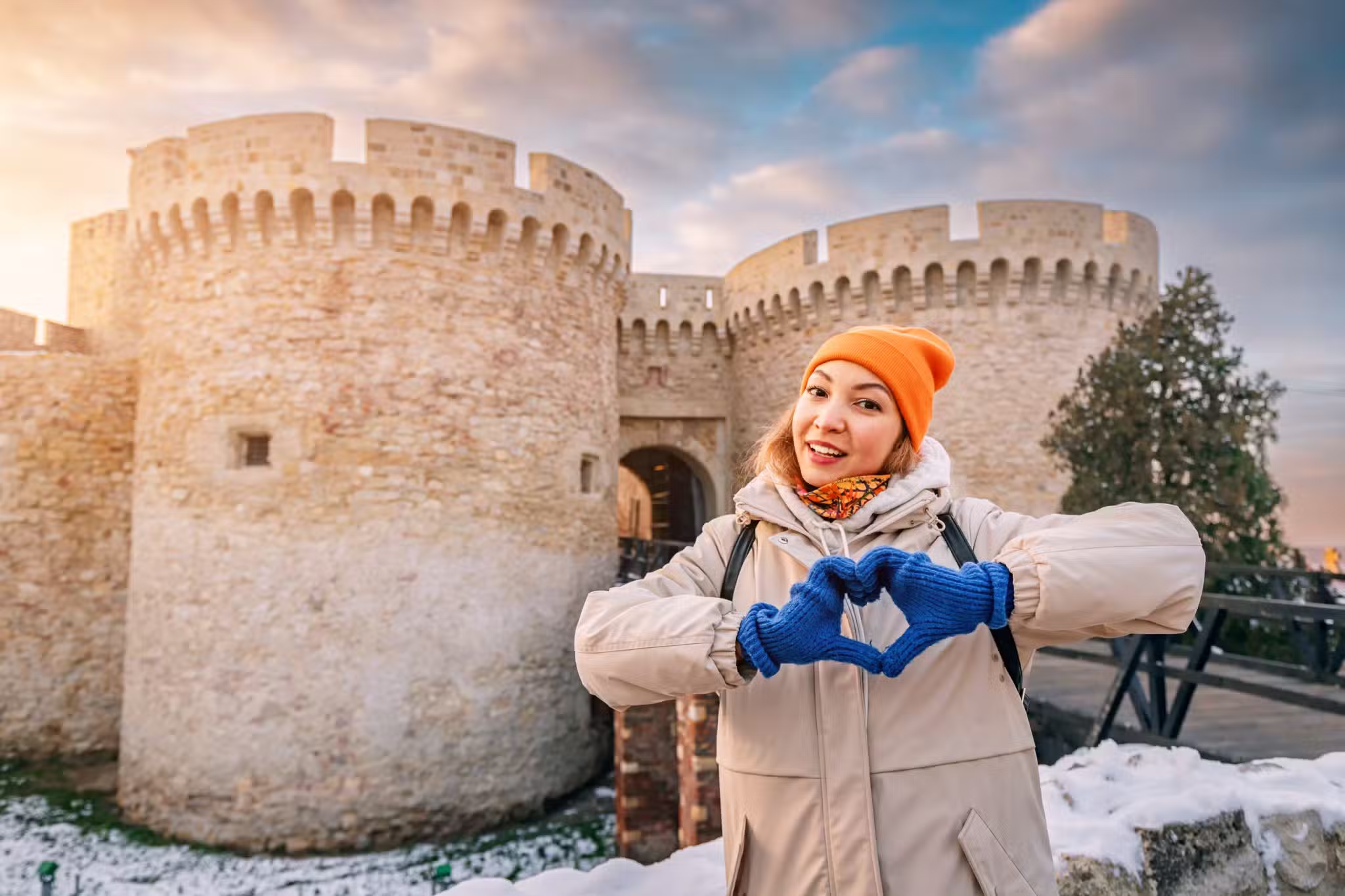
The Talking Serbian Phrasebook
The Talking Phrasebook Series presents useful phrases and words in side-by-side translation and with audio files specifically geared to help students work on listening skills and pronunciation. Below, you will find several useful phrases and words. To the left is the English and to the far right is the Serbian translation in both Latin and […]

Serbian Holidays 2025: A Complete Guide
Serbian holidays show how civic and religious identity are often interchangeable in Serbia. Religion enters into almost every holiday listed below. Many of these holidays focus on family and tradition, but many observances focus on the sacrifices that Serbs have made in wars and battles ranging from the Battle of Kosovo in 1389 to WWI […]
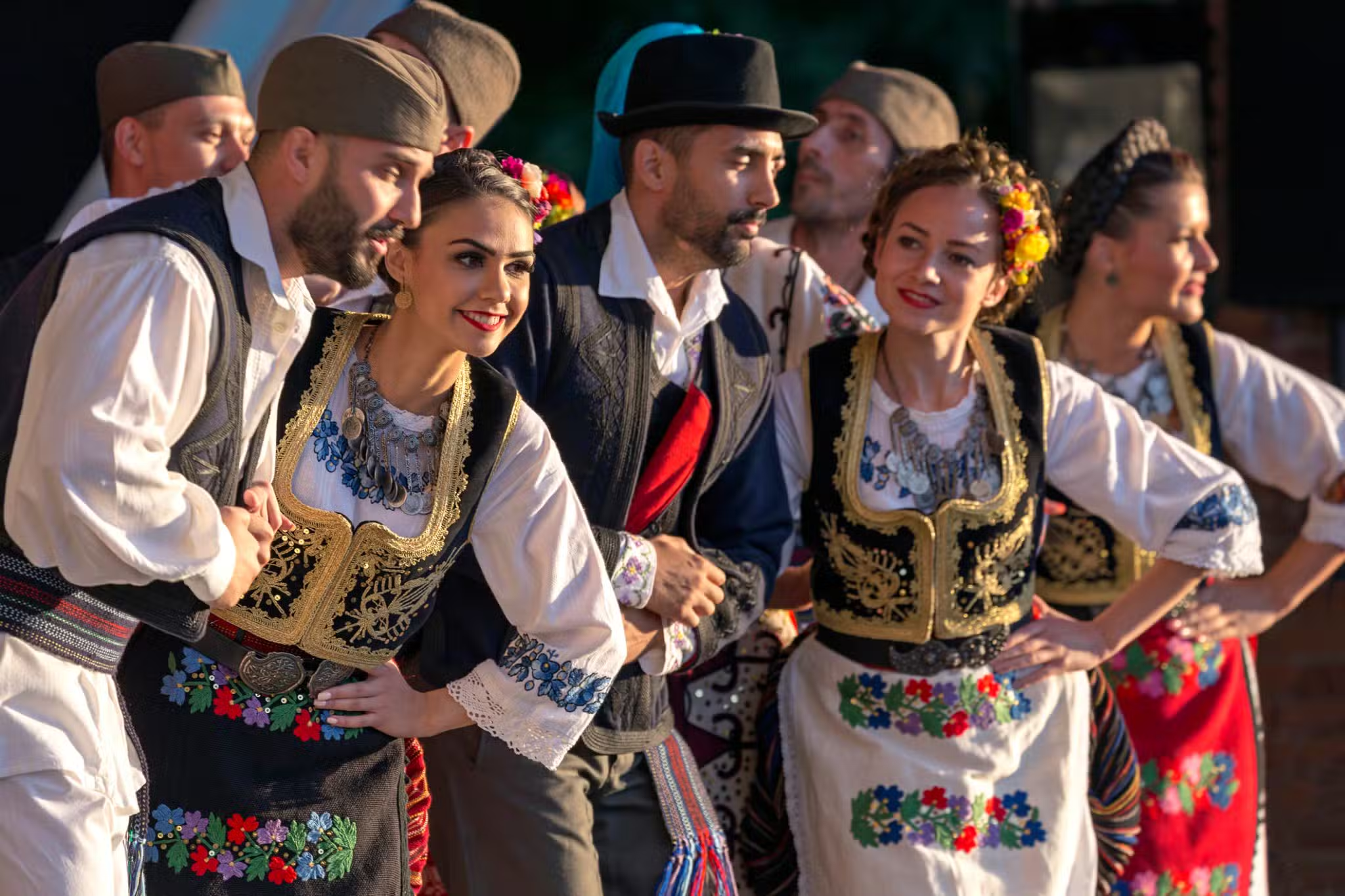
Serbia’s Story of Identity: Heroes, Memory, and Meaning
What shapes Sebian national identity? The answer is complex and personal, but one key element is the Sebian national narrative. This includes the heroes and pivotal events taught in schools, the places central to the nation’s collective memory, and the language and beliefs that frame its worldview. A national narrative goes beyond history: it is […]




